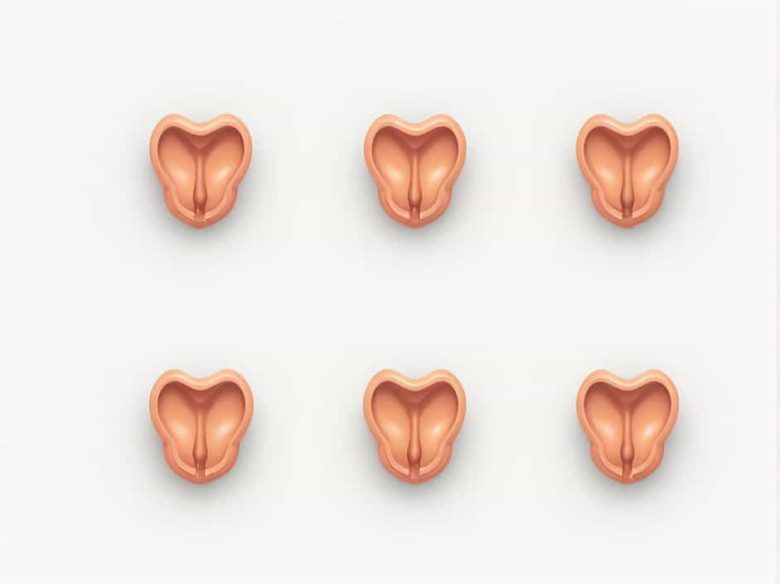The female reproductive system is a complex network of organs responsible for reproduction hormone production and supporting fetal development during pregnancy. Understanding its parts and functions is essential for learning about human biology fertility and overall health.
This topic explains the main components of the female reproductive system their functions and their roles in the reproductive process.
Major Parts of the Female Reproductive System
The female reproductive system consists of internal and external organs.
1. External Reproductive Organs
The external parts collectively called the vulva play a role in protection pleasure and guiding sperm into the body.
A. Vulva
The vulva includes all the external structures such as the labia clitoris and vaginal opening.
B. Labia Majora and Labia Minora
- Labia majora: Outer folds of skin that protect internal structures.
- Labia minora: Inner folds that protect the vaginal and urethral openings.
C. Clitoris
A small sensitive organ rich in nerve endings responsible for sexual pleasure.
D. Vaginal Opening
The entrance to the vagina which leads to internal reproductive organs.
2. Internal Reproductive Organs
The internal organs are responsible for ovulation fertilization pregnancy and childbirth.
A. Vagina
- A muscular canal that connects the external genitals to the uterus.
- Functions as the passage for menstrual flow sperm reception and childbirth.
B. Uterus (Womb)
- A hollow muscular organ where a fertilized egg implants and develops into a fetus.
- During pregnancy it expands to support fetal growth.
- The lining (endometrium) thickens each month to prepare for pregnancy.
C. Fallopian Tubes
- Two thin tubes connecting the ovaries to the uterus.
- The site where fertilization occurs if sperm meets an egg.
- Tiny hair-like structures called cilia help move the egg toward the uterus.
D. Ovaries
- Small oval-shaped glands located on both sides of the uterus.
- Produce and release eggs (ova) during ovulation.
- Produce hormones like estrogen and progesterone essential for reproductive health.
E. Cervix
- The lower part of the uterus that connects to the vagina.
- Produces mucus that changes consistency during ovulation to facilitate sperm movement.
- Dilates during labor to allow childbirth.
Functions of the Female Reproductive System
1. Ovulation (Egg Production and Release)
Each month one of the ovaries releases an egg (ovum) a process called ovulation. The egg travels through the fallopian tube where fertilization can occur if sperm is present.
2. Fertilization (Union of Egg and Sperm)
If sperm reaches the egg in the fallopian tube fertilization occurs. The fertilized egg now called a zygote travels to the uterus for implantation.
3. Menstrual Cycle (Hormonal Regulation)
If fertilization does not occur the uterine lining (endometrium) sheds leading to menstruation. The cycle repeats approximately every 28 days.
4. Pregnancy (Fetal Development)
If the fertilized egg implants in the uterus pregnancy begins. The uterus supports the growing fetus for about nine months.
5. Hormone Production
The ovaries produce estrogen and progesterone regulating:
- Menstrual cycles
- Pregnancy preparation
- Development of secondary sexual characteristics (e.g. breasts body shape)
6. Childbirth (Labor and Delivery)
During labor the cervix dilates and the baby passes through the vagina in a natural delivery.
Common Disorders of the Female Reproductive System
Several conditions can affect reproductive health.
1. Polycystic Ovary Syndrome (PCOS)
- A hormonal imbalance affecting ovulation causing irregular periods and cysts on the ovaries.
- Symptoms include weight gain acne and infertility.
2. Endometriosis
- A condition where tissue similar to the uterine lining grows outside the uterus.
- Causes severe menstrual pain infertility and heavy bleeding.
3. Fibroids
- Non-cancerous growths in the uterus that can cause pain heavy periods and fertility issues.
4. Cervical Cancer
- A cancer that develops in the cervix often linked to human papillomavirus (HPV) infection.
- Preventable with HPV vaccination and regular Pap smears.
5. Infertility
- Can result from hormonal imbalances blocked fallopian tubes or issues with the uterus or ovaries.
Maintaining Female Reproductive Health
Good reproductive health is essential for overall well-being. Here are some tips:
1. Regular Checkups
- Visit a gynecologist for routine exams and Pap smears.
- Get HPV vaccinations for cervical cancer prevention.
2. Healthy Diet
- Eat foods rich in iron folic acid and omega-3 fatty acids.
- Stay hydrated and avoid processed foods.
3. Safe Practices
- Practice safe sex to prevent sexually transmitted infections (STIs).
- Use protection and consider family planning options.
4. Stress Management
- Chronic stress can affect menstrual cycles and hormone balance.
- Practice relaxation techniques like yoga and meditation.
5. Exercise Regularly
- Helps maintain hormonal balance and supports reproductive health.
- Reduces the risk of PCOS and obesity-related fertility issues.
The female reproductive system is a complex and essential part of human life. Each organ plays a critical role in fertility pregnancy and overall health.
Understanding the parts and functions of this system helps in recognizing potential health issues and maintaining a healthy reproductive life. Regular checkups a balanced diet and a healthy lifestyle contribute to optimal reproductive health and well-being.



